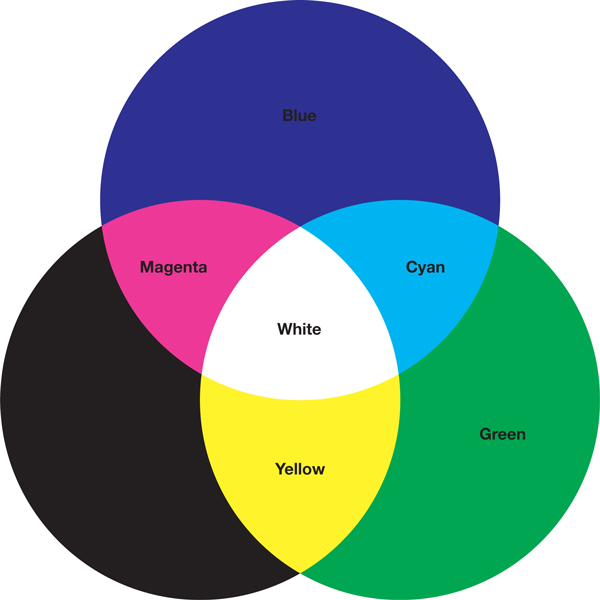Beyond Four Colors
There are two leaders in the evolution of color technology. One is the use of stochastic or frequency-modulated screens. As already mentioned, in a conventional halftone the dots are locked into a grid pattern. Therefore, in order to display (the illusion of) different shades of a color, they have to vary in size. However, on an inkjet printer all the dots are the same size. In order for them to convey the same illusion, they cannot be locked into a grid. Instead, they are sprayed apparently at random at varying densities. Because there are no grids to cause screen clash, the image is no longer subject to moiré patterns. Therefore any number of colors can be added to extend the range well beyond that of CMYK inks.
The disadvantages of the process are mostly in dealing with the extremely small dots needed to create a convincing image. If the dots are too big, the result looks grainy, even though the dots are actually much smaller than those in a conventional halftone. If the dots are too small, even a tiny amount of dot gain can wipe them out altogether, or make them repeatedly plug up on the press.
Some imagesetters can produce “hexachrome” (i.e. six-color) separations using stochastic screens of around 600dpi (dots per inch, actually meaning pixels per inch, the accepted measurement of image resolution), good enough for a highquality print. In hexachrome separations, orange and green are added to the CMYK range in order to extend those areas that are most difficult to duplicate conventionally.
The other “next step” also uses hexachrome separations, but in a different way. The two additional colors, orange and green, are the opposites of cyan and magenta, respectively. Therefore, any given color will contain only one of the pair—orange or cyan; green or magenta—but not both. This means that both colors in each pair can occupy the same screen angle, because they never actually occupy the same space within the image. Thus they do not create a moiré pattern, making it possible to use conventional halftone screening with a six-color hexachrome process instead of CMYK’s four.
Pantone Inc. is pioneering the development of this system, and claims that more than 90% of its Pantone Matching System color range can be matched using hexachrome inks (see Chapter 10). This will allow graphic designers to get much closer in print to colors that, so far, they have only been able to work with on screen in RGB images. An advantage to printers is that, instead of washing one custom-mixed ink after another off the press, they will be able to stay with the six hexachrome colors for almost everything.

A color wheel showing the relationship between RGB and CMYK color spaces.
